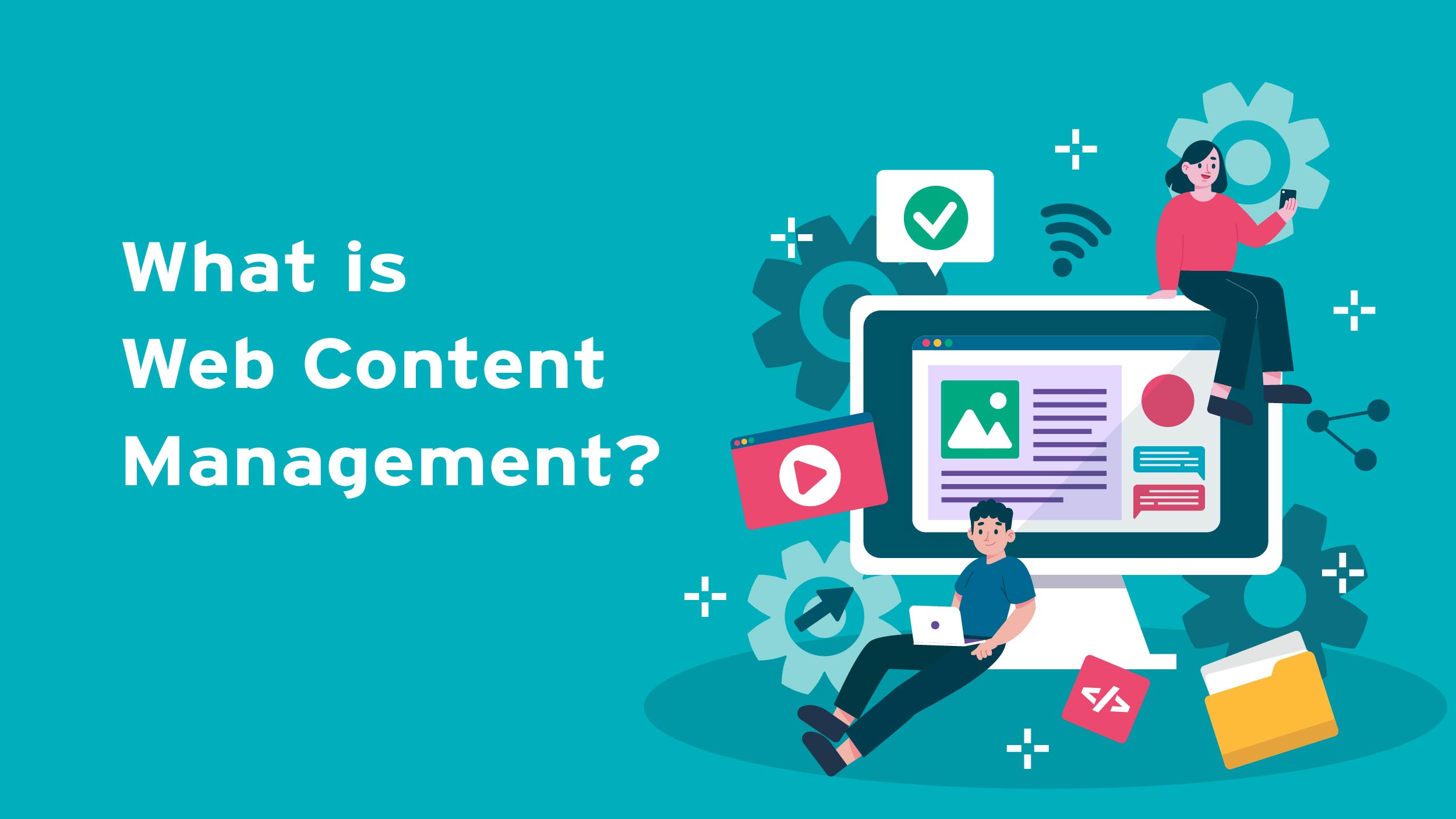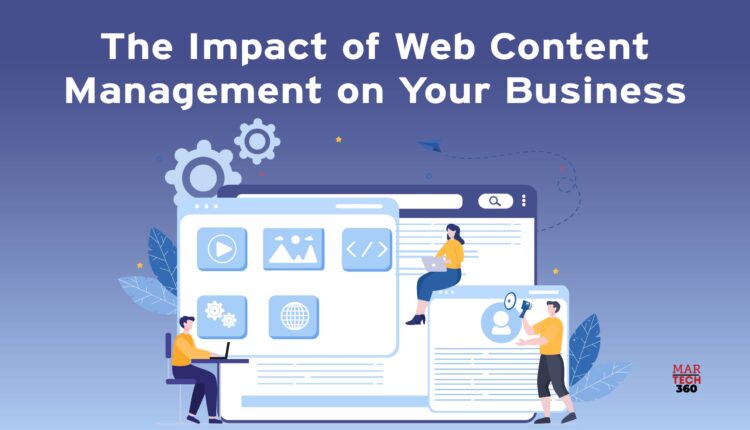In the ever-evolving digital landscape, creating and managing web content efficiently is paramount for businesses and individuals alike. Web content management (WCM) systems have become indispensable tools that empower organizations to curate, publish, and update content seamlessly. In this era of information overload, a well-structured and user-friendly website can make all the difference in engaging audiences and driving success.
Let’s delve into the realm of web content management and discover how it can transform the way we create and deliver online content.
What is Web Content Management?
 A web content management system, or WCMS for short, is a special type of software that helps organizations manage the content on their websites. What’s unique about it is that it allows people to create and maintain web content without needing to be experts in web programming or coding languages.
A web content management system, or WCMS for short, is a special type of software that helps organizations manage the content on their websites. What’s unique about it is that it allows people to create and maintain web content without needing to be experts in web programming or coding languages.
This is really useful for businesses because effectively managing web content can provide valuable insights for decision-making, deliver good results, and add value to their online presence.
So, how does a WCMS actually work? It lets users control, change, and arrange content on a webpage. Users can put their content into a database and organize it using flexible languages like XML or .NET. They can access the WCMS through a web browser, where they can edit content and control how it’s displayed right from that user-friendly interface.
A WCMS has two main parts:
- Content management application (CMA): This is the part that lets users like marketers and content creators design, create, edit, and remove content from the website, without needing help from the IT department.
- Content delivery application (CDA): This part takes the content created in the CMA and turns it into the website that visitors see and interact with.
Also Read: 7 Proven Strategies for Running a Successful Online Ecommerce Business
You can run a WCMS either in your own data center or in the cloud.
Now, why would a business want to use a WCMS? Well, it’s a powerful tool for creating, managing, and publishing content on websites, which is crucial for marketing. Most digital marketing strategies, like email campaigns and social media, lead customers back to the company website, so having a well-maintained online presence is key. WCMS technology is what empowers websites that focus on content sharing, such as blogs and portfolios. Apart from this, it’s also versatile and organizations can use it for things like running online stores or forums.
Some of the prominent web content management software are WordPress, Joomla, Drupal, and more.
Capabilities and Features of a WCMS
 Key features of a WCMS are:
Key features of a WCMS are:
- Personalized Content Management: A WCMS allows users to design, create, and maintain personalized content for their website.
- Content Review and Approval: Editors can review and approve content before it goes live, ensuring quality and accuracy.
- Automated Publishing: The system automates the publishing process, making content updates seamless.
Additional features of a web content management system are:
- Automated Templates: Users can employ pre-designed templates for new or existing content, reducing the need for custom template design.
- Access Control: Administrators can control who has access to specific site pages, enhancing security.
- Scalable Expansion: Organizations can boost their WCMS implementation across multiple domains as needed.
- Editing Tools: Users can easily customize content, improve structure by adding titles, and headers, and design web pages using drag-and-drop tools.
- Plugin Installation: It allows users to extend the website’s functionality with plugins or modules effortlessly.
- Software Updates: The WCMS stays up-to-date with current web standards through regular software updates.
- Workflow Management: Authorized users can ensure that the content is reviewed and approved before publication, maintaining quality control.
- Collaboration Tools: Multiple users can collaborate on content modification, fostering teamwork.
- Document Management: It facilitates document lifecycle management, including creation, revisions, publication, archiving, and removal.
- Multilingual Support: Content can be displayed in various languages to cater to a diverse audience.
- Version Control: Editors can access previous versions of content since historical data is easily retrievable.
Advantages of Web Content Management
- Affordability is a major advantage of a WCMS. These systems are usually low in cost, with some even available for free or offering subscription options that outweigh the overall expenses.
- User-friendly interface. WCMS options are designed to be easily accessible and manageable, even for individuals without technical coding expertise
- Customization made easy. With a web content management system (WCMS), even beginners can create and customize front-end designs effortlessly using a universal layout.
- Managing workflows. WCMS allows administrators to have control over and customize workflow management. With certain WCMS options, administrators can establish their own rules for workflow management and define a series of steps for each task.
- Search engine optimization (SEO) is an important aspect of digital marketing. A web content management system (WCMS) can help businesses improve their search engine rankings by providing editing tools that allow users to create content with the right keywords and meta information. This includes descriptions, keywords, and alternative text for images. A WCMS should also make it easy to link relevant content within the text to further enhance SEO efforts.
Disadvantages of WCMS
It is important to note that a WCMS may not be suitable for every organization. There are several disadvantages to consider:
- Larger companies may face high costs when implementing a web content management system (WCMS) due to the need for extensive training and certifications. Additionally, maintenance of a WCMS can also incur expenses through software upgrades and licensing updates.
- Larger systems can experience slower performance over time due to latency issues. This can occur when hardware is not regularly updated or when cache files become too large.
- One of the critical concerns with WCMS (web content management systems) is security. If administrators fail to regularly update and patch their WCMS, it becomes susceptible to hacking. To mitigate these risks, administrators must diligently monitor and maintain various components of the system, including web server software, MySQL databases, and any plugins or add-ons in use.
Winding Up
Web content management empowers businesses to curate, publish, and optimize content effectively, ensuring that their websites stay relevant, engaging, and competitive in the digital landscape. By staying up-to-date with the latest CMS platforms, best practices, and user-centric strategies, organizations can leverage the power of web content management to create impactful online experiences that leave a lasting impression on their audiences.


Comments are closed.